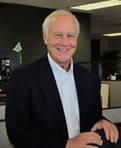During the Middle Ages the town controller or accountant would show the citizenry how much was in the town’s “bouge,” a leather bag or wallet. With this knowledge, they would decide how best to spend it to cover the town’s expenses. Eventually, the term became the “budget” and was adopted by various enterprises to control expenses. Since not all expenses are immediate, the idea of forecasting revenues and expenses slowly entered the picture. However, expense control remained the primary objective. Hence the saying familiar to all of us: “That’s not in the budget.”
Fast forward more recently, Fortune magazine published a criticism of the narrow focus on budget as expense control. They told a story where a corporate executive came to a meeting to pitch a project whereby the company could increase revenue by $10 million with an expenditure of just $1 million. However, he was told that they would have to wait because the $1 million was not in the budget.
Expense budgets often control companies to the point of choking. It is as though expense control is the whole objective. It’s easier to not spend than to invest. In the 1960s, Chevrolet introduced the Corvair and it was very popular until serious accidents became a big problem. Eventually, it was determined that the steering was unstable. It turned out that the budget did not allow the addition of a $1 steering stabilizer bar. Certainly, this is an extreme example, but not an uncommon practice.
Budgeting hasn’t changed much in its meticulous attention to expense forecasting and control. It remains a process of negotiation between expenses and revenue generation. These two forces are determined by trending or by management edict. In a financial institution, growth is achieved from environmental factors, new activity or branching, along with the required expenses to support it. As environmental factors are not under the institution’s control, branching is one way to change that dynamic. New activity requires attention to method, or how generating new activity is controlled. The keys to control are the actions taken to effect change that drive results. This is where a Playbook is most valuable. Let’s investigate the features and benefits of a Playbook.
Click here to read our full white paper and discover the relationship between your budget, a playbook, and success.
 About the Author:
About the Author:
Craig Hartman, Chairman & CEO
Craig is the Founder of Plansmith, planning expert, and banking educator.
